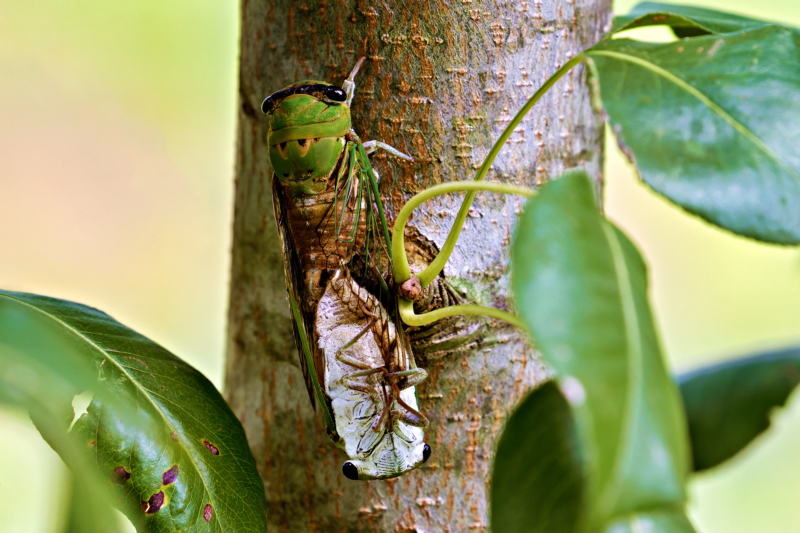While walking through my backyard in Arkansas, I spotted something unusual on one of my pear trees, a pair of cicadas mating. I quickly grabbed my camera and captured the moment. That encounter led me to learn more about these insects and their unique mating behaviors. What I found was a fascinating system of songs, signals, and survival.

The Role of Sound in Cicada Mating
Cicada mating starts with the male’s song. Using structures called tymbals, he produces loud, rhythmic calls that can be heard from far away. When many males gather and sing together, it creates a chorus that fills the air with sound.
However, these calls are not just noise. They serve a vital purpose: to attract females. Once a female shows interest, the male switches to a softer, more refined courtship song. This change is key to winning her over.
Female Cicadas Signal Back
Females aren’t silent during this process. They respond to the male’s calls by flicking their wings in precise patterns. These wing flicks create sharp clicks or rustling sounds. This duet helps the male find her location and confirms her interest.
Why Timing Is Everything
What makes this process even more incredible is the urgency. Many cicadas, especially the periodical species, spend years underground, up to 17 years in some cases. When they finally emerge, they have only a short time to mate and lay eggs.
This synchronized emergence protects them. When millions come out at once, predators can’t eat them all. This gives more cicadas a chance to reproduce.
To understand more about their timing and long underground life, I wrote this post: Remarkable Life Span of Cicadas in Arkansas.
How Female Choice Shapes the Species
Females choose mates based on the quality of the male’s call. Traits like pitch, rhythm, and duration all matter. This natural selection ensures the strongest genes get passed on.
Interestingly, some males continue calling even after mating. Although it seems unnecessary, this behavior encourages diversity by drawing in unmated females looking for other partners.
The Environment and a Strange Fungal Twist
The timing of a cicada’s emergence depends on environmental cues, mainly soil temperature. This ensures they surface when it’s safest to reproduce.
In a strange twist of nature, some male cicadas get infected by a fungus that destroys their genitals. Despite this, they continue calling, unknowingly spreading fungal spores. It’s a bizarre example of how different species interact in the wild.
A Close-Up Look at Nature’s Wonders
Watching those cicadas mate was a reminder of how much drama unfolds just outside my door. Their songs, behaviors, and challenges all tell a story of survival and adaptation. It’s moments like these that make wildlife photography so rewarding.
So next time you hear that summer buzz, take a moment to think about what’s really going on in the trees above you.

Very, very interesting information.
Thank you for sharing it.
I love all the fascinating information you provided about cicadas in your post!